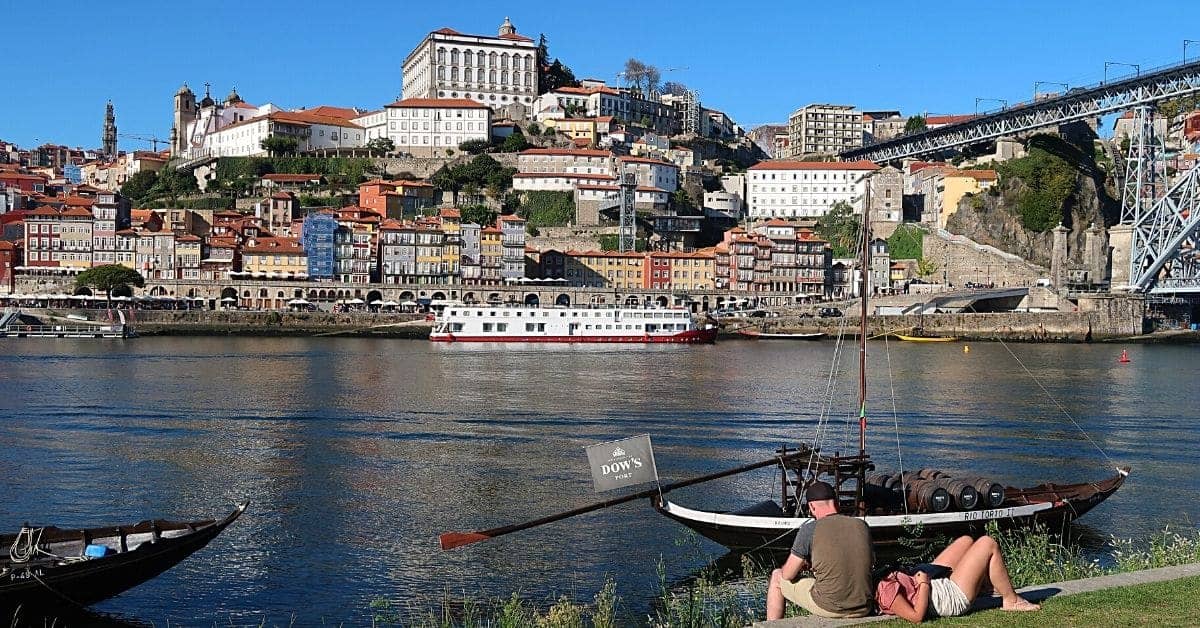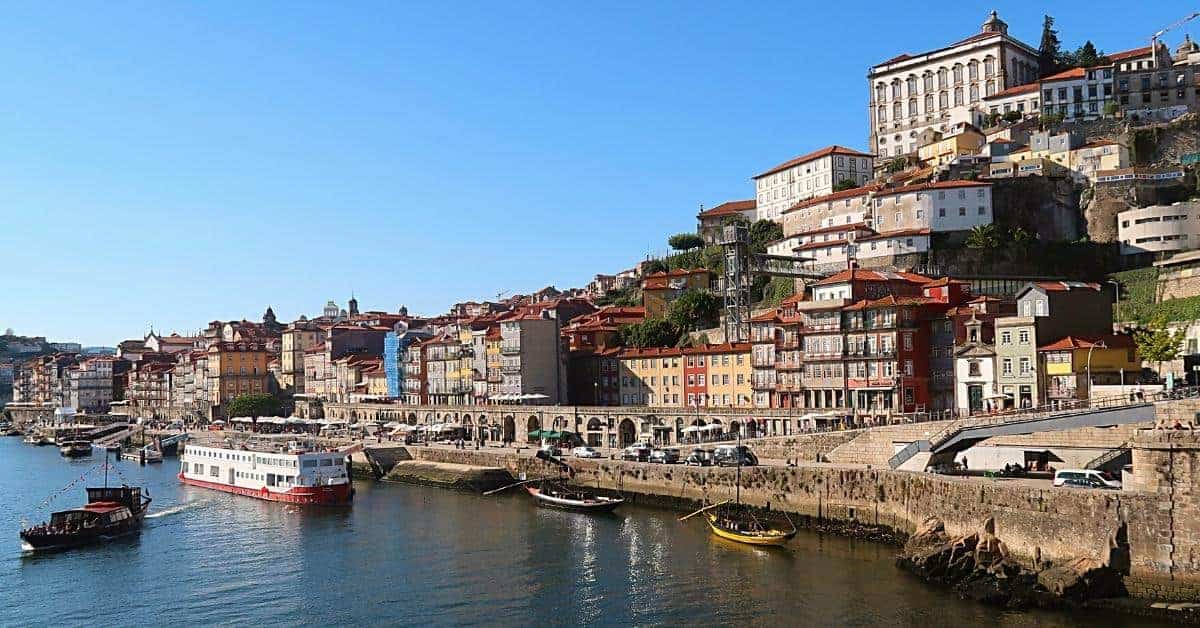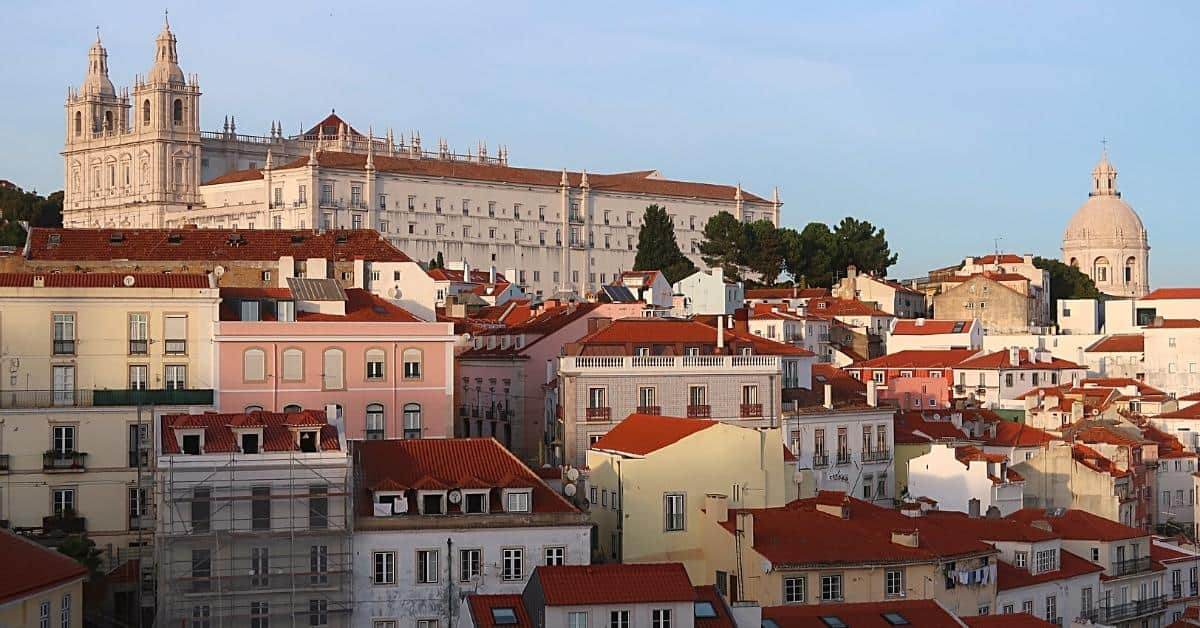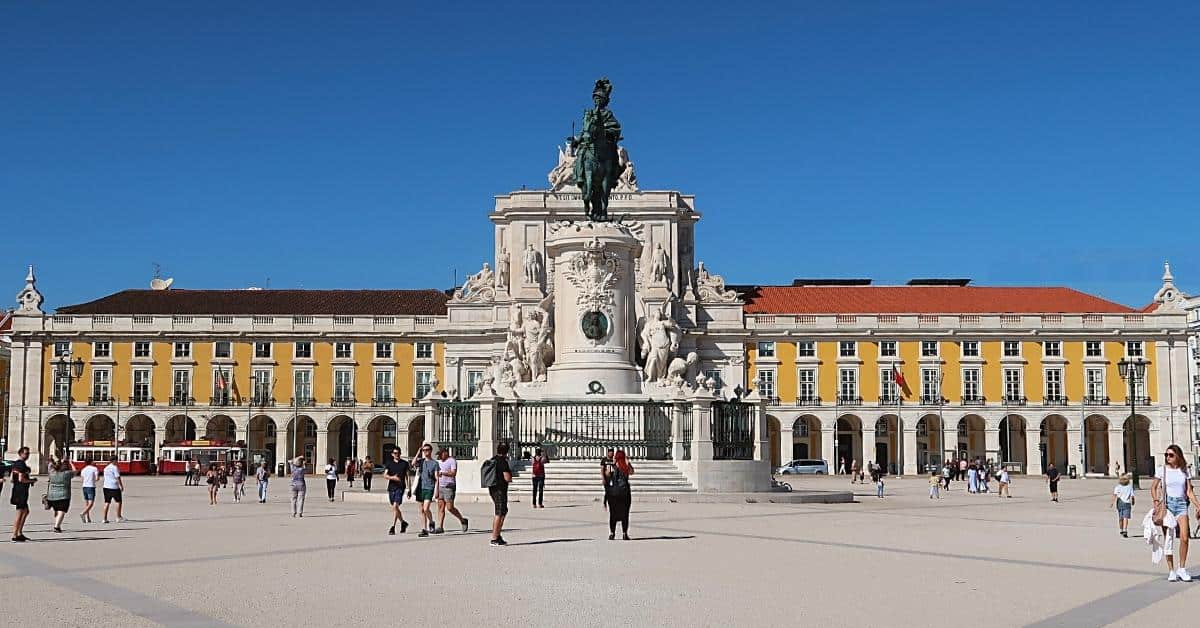PORTUGAL SOLO TRAVEL GUIDE
KNOW BEFORE YOU GO! PORTUGAL TRAVEL GUIDE 2024
PLAN AND BOOK YOUR PORTUGAL SOLO TRAVEL
This page may contain affiliate links for your convenience. For products, the goal is to first provide direct links to eco-friendly, ethical, and sustainable companies, and then to those same type (i.e., Climate Pledge Friendly Certification), of brands that use Amazon, if possible. Therefore, you may see multiple links for one option. Should you make a purchase through any link, I will receive a small commission at no additional cost to you. See my Disclaimers & Disclosures and Privacy Policy for more information.
Like this? Share it with others!
BEM VINDO A PORTUGAL!

Hi! I’m Gwen, and my passion is using my 28 years of solo global travel and sustainability knowledge and experience to help the solo over 50’s be and stay adventurous through solo travel with their eco-friendly, responsible travel foot forward. Here is my guide to Portugal solo travel, all from my solo travel in Portugal, so you can book and realize your solo trip to Portugal. What are you waiting for?
PORTUGAL: DID YOU KNOW?
About Portugal
Portugal – the oldest country in Europe and one of largest running and reaching empires in history, is home to 17 UNESCO World Heritage Sites, including the Alto Duoro Wine Region, the University of Coimbra, and historic Centres of Évora, Guimarães, and Oporto.
Portugal’s official language is that of nine countries and is the world’s top port (Vinho do Porto) and cork producer.
Portugal is also home to Vinho Verde wine, cheese, the largest artificial underwater park, Pintta shoes, great surfing, beautiful beaches, Bobbin lace, fado music, Ferdinand Magellan, Vasco da Gama, Cristiano Ronaldo, José Saramago, Carmen Miranda, and a world-class city and capital, Lisbon.
Languages in Portugal
The official language is Portuguese. Other languages in Portugal that can be heard are Mirandese, Spanish and Calão, depending on the region.

Enhance Portugal Travel with the Portuguese Basics
Portuguese Culture
Located in the Iberian Peninsula of Southwestern Europe, bordered by Spain and the Atlantic Ocean, civilization in Portugal goes back 400,000 years. Throughout time it has been invaded by the Roman Empire and the Islamic Umayyad Caliphate.
It was in a dynastic union with Spain. It experienced military coups in 1926 and 1974 when, ultimately, it underwent democratic reforms, and in 1975, Portugal granted independence to its African colonies.
Today, Portugal holds a homogeneous Mediterranean society with the influence of African cultures. It also holds recent immigrants from Eastern Europe.
The Portuguese Republic is made up of four sovereignty bodies, including the democratically elected government, the President, the Assembly, and the courts. Portugal’s political party system has been dominated by the Socialist and Social Democratic parties since 1975.
Portugal has a healthy education system where education is compulsory and free for children to age 18 – through both public and private school offerings – with university and polytechnic education costing only 1.3 times the minimum national wage rate.

The Portuguese enjoy a national health care system (NHS) that is free to those under 18 and over 65. Private health insurance can be purchased voluntarily.
The Portuguese are considered traditional and conservative people who deal with each other with a sense of formality and politeness. They take pride in appearance in themselves, their homes, and their cities. They respect hierarchical statuses such as age and position within business, government, religion and within the family, and use titles when addressing or greeting each other.
Greetings can be formal with a handshake and eye contact but may become more relaxed with a hug and/or kiss through personal familiarity. When invited to a home it is customary to be punctual, but tardiness is considered OK when going to a party. It is recommended to research what gifts to bring at a particular event.
The Portuguese place high value on a strong family structure with mutual support within close extended families, and nepotism is a positive value implying trust on those they know. The majority of Portuguese (81%) identify as Roman Catholic with the remaining population about equally distributed amongst Protestant Christian, agnostic or atheist.

Portuguese cuisine comes mostly from its Mediterranean influence and is known for its seafood and spices, such as piri piri (chili peppers), black pepper, vanilla, saffron and cinnamon. Garlic, olive oil, bay leaf and parsley are also widely used in dishes.
A typical Portuguese breakfast could consist of a combination of fresh bread, ham, cheese, jam and butter, cereal, pastries, yogurt and fruit served with tea, coffee or espresso (bica), milk and hot chocolate. Lunch and dinners could consist of a soup (meat or vegan) with a combination of a fish, pork, rice, potato, vegetable and/or salad.
Cod is the most widely consumed fish in Portugal with a fishing industry dating to the 15thcentury. Other popular fish include, but are not limited to, sardines, squid, octopus, cuttlefish, shrimp, crab, lobster, sea bass, mackerel and a variety of shellfish.

Traditional Portuguese dishes include caldo verde (pureed potato, onion and garlic soup) with or without chouico (spicy sausage); bacalhau (salted cod); sardinhas assadas (freshly grilled sardines); cozido (slowly boiled meats, enchidos (sausages) and vegetables); açorda (day-old bread and poached eggs served in an herbed broth); and, peixinhos da horta (breaded and fried green beans), to name but a few.
Traditional desserts include arroz doce (rice pudding with cinnamon), caramel custard and pastel de nata (custard tart with cinnamon).
The Portuguese cheesemakers in the Serra da Estrela, Queijo São Jorge regions and island of São Jorge are known for producing varieties from cow, goat and sheep’s milk.
The Portuguese enjoy producing and drinking green, white and red wines from Vinho Verde (one my favorites) to Maduro to port wine. Popular liqueurs include Licor Beirão and Ginjinha.

Popular Activities in Portugal
Like most other European countries, Portugal is crazy about its football (soccer). The Portuguese not only attend a lot of football events or watch them on TV, but they also like to participate in football – there are many local teams to be involved with. The Portuguese also like to play golf, fish, sail, windsurf, water ski, jet ski, surf, hike, cycle and jog.
With many great beaches to choose from, hanging out on the beach, beach picnicking or beach football are also popular activities. The Portuguese like to dine out or enjoy bica (espresso) in the many cafés across Portugal.
You can also see the Portuguese going to concerts, movies, museums, national monuments, bookstores, shopping centers or special events such as the Nos Alive music festival in Lisbon, The Lisbon and Estoril Film Festival or Feira do Livro de Lisboa (Lisbon Book Fair), to name a few.
Best Wine Tours in Portugal
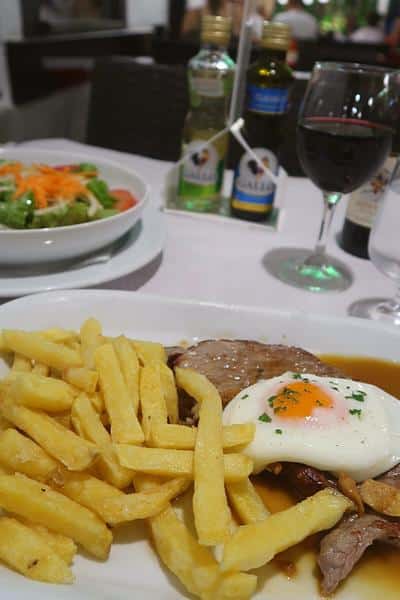
PORTUGAL TRAVEL PLANNING
Portuguese Currency
Portugal uses the Euro (€). Exchange rates are usually favorable for Europeans but could fluctuate in the other direction. Check throughout your travel planning phase on any exchange rate changes.
Tipping in Portugal
Traveling in a new country is easier when you know the country’s tipping etiquette in advance as each country has its own rules. That said, country rules and norms can shift, so here is an international tipping resource for over 70 countries to use as a general guideline that I have found is constantly updated.
What’s not on there is how to tip a concierge, beauty salons or spas, travel or tour guides, etc. For these extras, it is acceptable to tip 10% at minimum. Remember, tipping is for good service only.
Additionally, you should always tip in the local currency (if tipping in cash), and do not be offended if your tip is refused as it may not be the norm. I feel it’s always better to offer a tip for good service than not, unless I know it will be considered offensive, like in Japan.
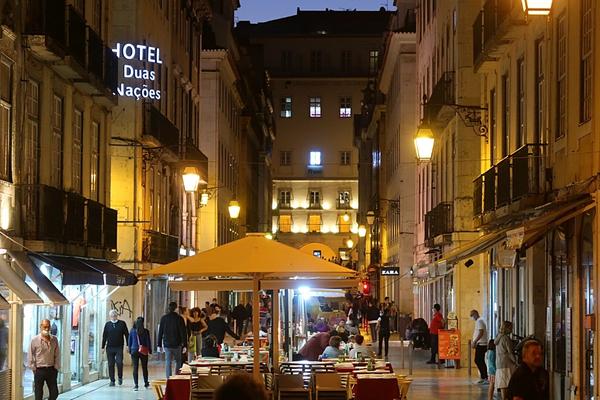
Portugal Holidays
It’s a complete bummer to spend time and money on the holiday of a lifetime only to show up at a key attraction, or try to access travel or banking resources, only to find them closed due to a national or local holiday.
Therefore, a key activity to do in your early Portugal vacation planning stage is to know the local and national holidays in Portugal.
PORTUGAL TRAVEL REQUIREMENTS
Travel Documents for Portugal
From the U.S., you will need a valid passport with an expiration date greater than 6 months from your return date to the U.S. It is advised to always check the U.S. State Department in advance of traveling to Portugal for pertinent, up-to-date Portugal travel advisories and information. If you are not from the U.S., please check your government’s website.
At this time (October 2023), a travel visa is not required for U.S. citizens who travel in Portugal 90 days or less and within a 180-day period. However, in mid-2025 it is expected that the European Travel Information and Authorization System (ETAIS) will go into effect that is designed to strengthen European borders and streamline entry. At that time, a printed ETAIS visa waiver (the “ETAIS”) will be required to enter the Schengen Area for tourist, business or transit purposes of 90 days or less. You will be able to apply online for the ETAIS visa waiver, which will also require a fee (7 EUR). Requirements for an ETAIS are available now. Watch for ETAIS updates if you are planning to solo travel to Portugal in 2025.
If you are not from the U.S., please check if your country is on the ETAIS list indicating whether you are required to obtain an ETAIS or a Schengen Visa.
Choose from Top Travel Document Holders





Vaccinations for Portugal
There are normally no vaccinations required for Portugal travel. The U.S. State Department provides up-to-date required vaccination information for traveling to Portugal. It is advised to always check for any Portugal travel restrictions and required vaccinations during your planning stage and again before you leave.
If you are not from the U.S., please check your government’s website.

PORTUGAL TRAVEL ESSENTIALS
Electronics for Portugal
Want to use your 110V electronics while traveling around Portugal? Portugal’s voltage is 230V, and the standard frequency is 50 Hz. If you do not already have electronics (hair dryer, clippers, curling iron, etc.) made for Portugal’s voltage, you will need to bring a voltage converter to use your electronics. Below are top-rated power converters for you to compare and buy.
Choose the Converter That’s Right For You





Most smartphones, tablets, laptops, cameras and similar electronics don’t require a converter (double-check your device(s) before you leave home), but you will still need a plug adapter.
Traveling to Portugal, Type C and F adapters will fit Portugal’s electronic outlets. I recommend bringing at least one of each adapter type accepted. I do not recommend using those single adapters for 100+ countries. They have been known to break and/or cause a power short.
Be prepared before you visit Portugal. Bring a solid, reliable, and grounded power adapter to safely charge your electronics in Portugal. Below are top-rated U.S. (Type A and B) to Portugal power adapter options, from the only brand I travel with, for you to compare and buy.
Choose the Portugal Adapter That’s Right for You
Type C Adapters





Type E/F Adapters





If you are going to another country in addition to your trip to Portugal, check this international travel adapter guide to make sure you’re prepared.
Cyber Security While Traveling
Having a virtual private network (VPN) service and portable WiFi is always a good idea to not just stay connected, but stay connected securely in your hotel and all public spaces, like airports, train stations, and restaurants.

- Portable WiFi Hotspot for Travel: Experience seamless connectivity with the Solis Lite, your pocket-friendly companion that offers secure and reliable mobile WiFi hotspot coverage in over 135...
- SIMO’s virtual, multi-carrier network, includes all the major carriers, so you can work, learn, or play from anywhere. Stay connected domestically or abroad with your personal Wi-Fi hotspot and...
- Built-in 4700 mAh Power Bank: Stay online all day with 16+ hours of battery life in your Solis Wi-Fi hotspot. Keep all your gadgets charged on-the-go.
- Perfect Case for SIMO Solis Lite 4G LTE WiFi Mobile Hotspot
- Featured Design: Strong compact light weight case, the round square design best matching the round shape of the Solis and making it easy to in and out of the case
- Assured Protection: Semi-hard carrying case protecting the device from shock, shake, scratch. PEVA materials with pressure or hit absorbing and water resistant. The round square design make it best to...
CITY GUIDES & ITINERARIES
Use my solo travel guides, itineraries, travel tips, day trip ideas, and recommended things to do in these top Portuguese destinations, all from my solo travel in Portugal, to plan your best Portugal solo travel.
The more I travel in Portugal, the more that gets added to this Portugal Travel Guide. Keep checking back.
Best Things to Do in Coimbra
Porto
Best Things to Do in Porto
Lisbon
3 Days in Lisbon Itinerary PDF Instant Download
WITH clickable links for ALL travel devices.
4 Days in Lisbon Itinerary PDF Instant Download
WITH clickable links for ALL travel devices.
Best Things to Do in Lisbon
Beaches
HOW TO BOOK PORTUGAL TRAVEL
It’s important to book the top three travel necessities early: flights, accommodations and ground transportation.
No travel Portugal guide would be complete without the booking tools below. These, along with fun Portugal things to do and ecotourism ideas, will allow you to realize your solo trip to Portugal.
Cheap Flights to Portugal
With the ever-growing demand for airline tickets to Portugal, flights book quicker these days. Find cheap flights to Portugal now.
Don’t Wait to Book Your Flight to Portugal
Portugal Places to Stay
Second in importance to buying airline tickets to Portugal is finding the best place to stay in Portugal for your solo travel in Portugal. Develop your Portugal travel itinerary now and find the best accommodations in Portugal to knock one more item off your Portugal travel planning list.
Find the Best Solo Travel Accommodations in Portugal
Getting Around Portugal
Portugal has all forms of transportation, including Uber and Carpoolworld (research in advance if they are in your destination area).
There are also taxis, of course, and you can easily find a rental car if that better suits your Portugal solo travel itinerary.
Find the Best Deals on Portugal Rental Cars
Portugal also part of Europe’s incredible bus and train network, so getting around and booking transportation is easy.
Things to Do in Portugal
Here are some more of the top things to do in Portugal to book for travelling Portugal solo.
Best Portuguese Food Tours & Activities
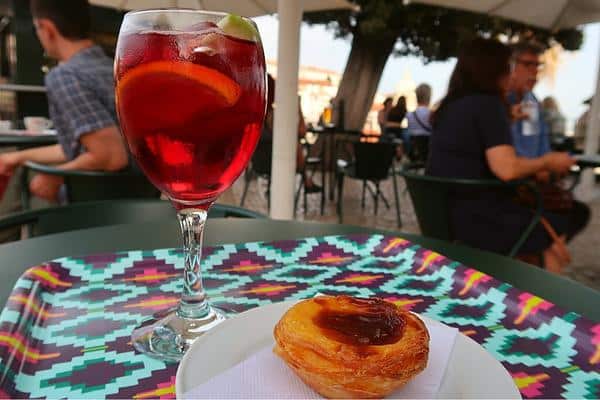
PORTUGAL ECO-TRAVEL IDEAS
There are ways to reduce your eco and carbon footprint through air travel, accommodations, tours, and activities in Portugal. To help avoid greenwashing businesses, here are some eco-friendly or sustainable travel (also called responsible travel) tips and resources to supplement your Portugal guide.
Air Travel Tips
Skyscanner provides a ‘Greener flights’ filter highlighting flights that emit less CO2.
Purchase carbon offsets through your airline or through a third party, like MyClimate.org, Carbonfund.org, or terrapass. Carbon offsetting allows you to buy a certificate to reduce carbon emissions, a major contributor to climate change, which in turn contribute community projects across countries to reduce greenhouse gas (GHG) emissions.
Ground Transportation
The best eco-friendly forms of ground transportation in Portugal are public transportation, walking, or renting a bicycle or electric scooter. They are also apt to cost less than other ground transportation.
Explore Portugal Bike and Electric Scooter Rentals
Try to avoid renting a car in Portugal by using the amazingly convenient and inexpensive buses and/or trains.
When booking a rideshare in Portugal, select the Bolt Green or Uber Green options instead of a traditional rideshare, or use Carpoolworld, to support the use of electric cars and carpooling for cleaner transportation in Portugal.
Bolt and Lime also have electric scooters to rent in Portugal for faster and cleaner commuting. Search Bolt and Lime for select city availability.

Accommodation Tips
Look for Portugal accommodations with the following self and third-party assessed certifications when you book:
Green Globe – Green Globe certifies hotels, resorts, conference centers, transportation, attractions, tour operators, and other tourism businesses globally on sustainable operations and management. Look for Portugal and other European Green Global members.
Green Key Global is an internationally recognized environmental certification for the lodging and meetings industries, including hotels and hostels, campsites and holiday parks, restaurants and attractions in 65 countries. Search for Green Key awarded sites.
Living Building Challenge – if you want to stay in a true, sustainable building, find one certified by the Living Building Challenge. LBC’s certification directory shows all project types globally. Hopefully they will put in a filter soon to allow searching by hotels or hospitality type.

LEED Certified – the USGBC’s LEED Certified label on buildings, like many of the Marriott’s hotels, are those that have verifiably employed multiple and varying green building strategies to improve human and environmental health. Search the LEED directory for Portugal certifications.
Green Lodging Program – Audubon International has an environmental stewardship certification through third-party verification. Search its certified members directory.
GSTC Certified – the Global Sustainable Tourism Council provides global standards for sustainable travel and tourism, as well as international accreditation for sustainable tourism Certification Bodies. Booking sites that offer GSTC certified sustainable are bookdifferent, EcoHotels, and Transat.
Another way to find accommodations in Australia implementing eco-friendly or sustainable practices, certified or not, is to reserve a Booking.com Travel Sustainable accommodation. Booking.com started the Travel Sustainable program in 2022.
Find Your Travel Sustainable Stay in Portugal
Eco-Friendly Things To Do
Portugal has ecotourism ideas available to explore for your next vacation.
Search Green Global and Green Key awarded members for eco-friendly activity providers in Portugal. Some may also have the GSTC Certified logo.
Top Portugal Ecotourism
Eco-Travel Products
There are more ways to do your part for the planet in your responsible travel, like bringing sustainable and eco-friendly products to protect Portugal’s environment.
There are more ways to do your part for the planet in your responsible travel. Read my 10 Easy Eco-Travel Tips and view my suggested Eco Travel Resources to learn more.

PORTUGAL TRAVEL SAFETY
Before You Go
Always consult your government’s Portugal travel advisory for your Portugal travel destination in the beginning travel planning phase and up to your departure date.
Buy Portugal travel insurance and international medical insurance for your Portugal solo trip to protect yourself and cover for emergencies.
Safety in Portugal
Portugal is considered a very safe place to visit for any tourist, solo or not. There may be instances of theft or pickpocketing in Lisbon, so be careful in tourist areas.
Beyond that, there is nothing I can recall from Portugal making it more of a “safety concern” than traveling in my own home country, so my standard tips for solo and female solo travelers in Portugal are:
- always carry photo ID with you; if you don’t want your passport on you at all times, at least carry a copy of it.
- always be “street wise”.
- always be aware of your surroundings, especially if you feel the need to imbibe or feel the need to “let loose” – you’re on vacation so have fun!
- never leave your food or drink unattended.
- keep your belongs on your person, or at least in your view in close proximity, at all times.
- be open to meeting and talking with new people – that is where a lot of the travel experience lies – but be careful on how you divulge personal information.
- research places in advance, if possible, so you know what to expect (i.e., “have a familiar view” – I like to Google the street view of new addresses I’m going to first).
- if something, someone or someplace makes you feel uncomfortable, go with your gut – leave.
Fire Season Travel Tips
PORTUGAL BUDGET TRAVEL
Best Time to Visit Portugal
Like other countries in Europe, Portugal’s high, tourist season, and most expensive time, is the summer (late June to August). The weather is hot and the beaches are crowded. Crowds are not as heavy, however, March to May or late September to October.
The weather is still nice in these months as well. The least expensive time to go to Portugal would be November to February. For overall best weather and prices, try booking well in advance for spring or autumn.

Budget Accommodations
Staying in hostels could save you a lot of money on accommodations in Portugal, especially if you stay in a dorm-style room. Save more money by booking well in advance.
Many Portugal hostels also offer private rooms, which I choose from time to time. Private rooms in hostels could possibly be cheaper than hotels in Portugal – it depends on where you stay and how far in advance you reserve.
Don’t overlook exploring hostels in Portugal if you’re on a budget.
Reserve Your Portugal Hostel
Best Time to Book Travel
Ready to book your Portugal solo travel? The sooner you book your reservations, the more you’re likely to save money and get the best flight, accommodation, and rental car choices and deals.
Don’t miss out and find the best Portugal travel deals. The best time to book travel is now. Bundling flight, hotel and/or transportation reservations may even save you more money on your trip to Portugal.
Book Portugal Travel Early to Save Money
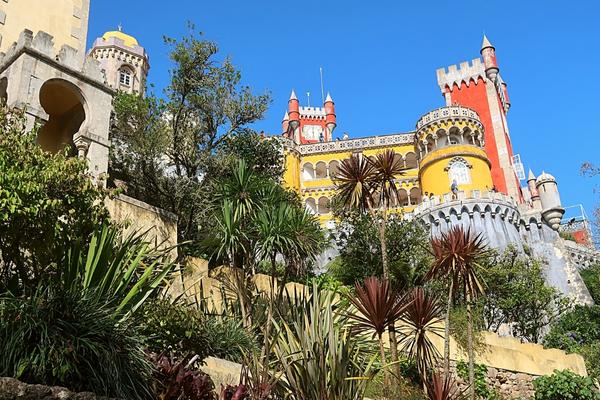
PERSONAL STORY
Portugal is where I met my mates from Australia and New Zealand. Originally, I was only going to spend a few days in Lisbon wandering the cobblestone streets and then a couple of days in Lagos. We were having so much fun in Lagos, however, two days turned into six. Instead of heading back to Barcelona, I celebrated my 26th birthday in Lagos.
Lagos was, and still is, one of my favorite towns. I finally revisited Lagos, along with Lisbon, in 2021. I also went to the Duoro Valley, Porto, Sintra, Braga, Coimbra, Cascais, and Lisbon.
Portugal’s countryside, beaches, food, wine, history, and people are not to be missed. If it’s not there, put Portugal on your travel bucket list.






